Popeye is a classic and iconic character. Elzie Crisler Segar developed the fictional animation character The Sailor Man. Popeye initially appeared in the daily cartoon strip Thimble Theater in a King Features magazine on January 17, 1929, and went on to become the comic strip’s protagonist.
The humorous Sailor Man has also made appearances in theater and television animated cartoons. Unlike most other cartoon characters created from someone’s imagination, Popeye was based on a real person who possessed characteristics similar to those displayed by the cartoon character.
Popeye initially emerged as a subsidiary character in Segar’s Thimble Theater comic in its tenth year, but the one-eyed sailor quickly rose to become the primary protagonist, and Thimble Theater became one of the publication’s most successful products during the 1930s. Hy Eisman’s strip, which he wrote as well as drew, continues to appear in first-run chunks in the Sunday edition. Reproductions of famous Sagendorf tales may be found in the daily comics.
Popeye Origin
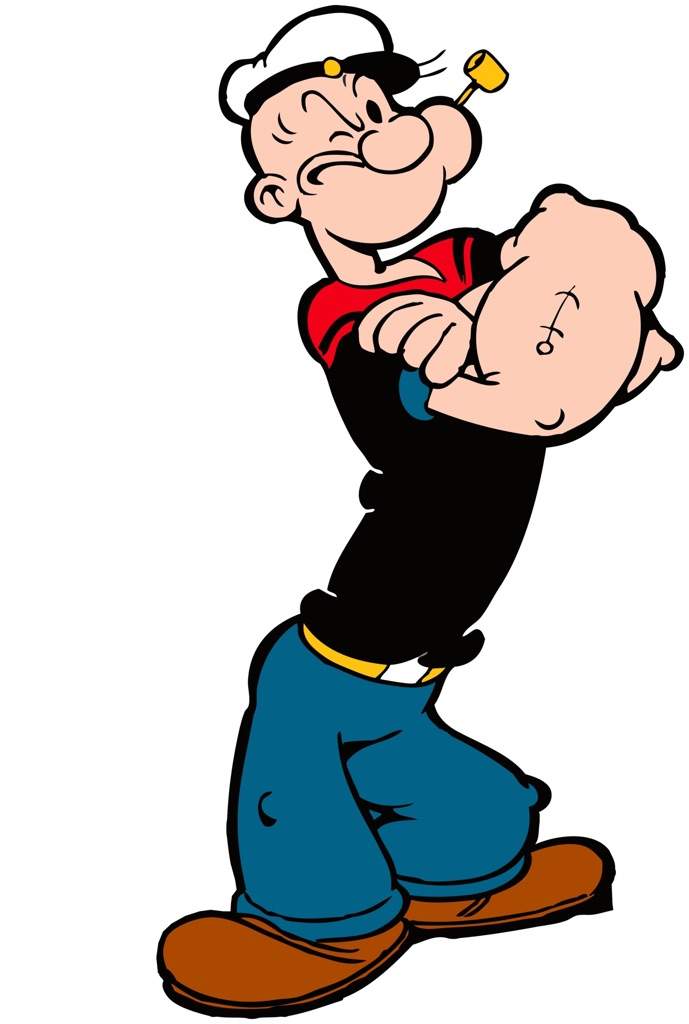
‘Oh, I’m Popeye the Sailor Man!’ exclaims the spinach-powered sailor in nearly every appearance. Popeye is best known as a fierce, spinach-guzzling sailor, a fictional character developed by American artist E. C. Segar. But few people know who inspired the muscular sailor in real life. Popeye the spinach-eating sailor had always been a childhood idol for millions of people and has earned a reputation for himself all over the world. Surprisingly, many people seem to believe the mythical sailor was inspired by a real individual, a resident of E.C. Segar’s community.
The individual in question is said to be Frank ‘Rocky’ Fiegel, whose parents were Polish. It is vital to stress that Frank ‘Rocky’ Fiegel, and not a sailor from HMS Rodney taken in 1940, as it was popularly believed for a while, was the true basis for Popeye’s character. According to the Southern Illinoisan newspaper’s 1979 piece a Chester Man, widely Accepted as Real-Life Popeye, was a Brawler, Loved Kids but some Chester residents thought Rocky was a “bum” as he lived with his mother and was frequently unemployed.
Of course, it isn’t the absence of a regular job that is supposed to have influenced E.C. Segar. Frank Fiegel was also a popular local brawler known for his fist-fighting talents, and this is where the cartoon Popeye comes into play. According to Fred M. Grandinetti’s book 2003, Popeye: An Illustrated Cultural History, Rocky’s facial characteristics, and pipe were also mirrored in the cartoon character.
Indeed, a person like Rocky may have had a tremendous effect on Segar, especially because the aspiring cartoonist was considerably younger than him. Fiegel was born in 1868, although it’s uncertain if that was in Poland or America, while on the other hand. C. Segar was born in 1894.
Furthermore, the Chicago Tribune described the Polish-Americans as having a “heart of gold for children.” He was known for generously helping children, such as giving them coins or shielding them from bullies. This was another resemblance to Popeye, who was shown to always be a ‘good guy.’
Anna and Bartomiej, Frank’s parents, were both Polish. The family has roots in the region of Czarnków in today’s central Poland, according to My Heritage, and their last name was originally spelled ‘Figiel.’ It was most likely changed to reflect the English-speaking reality of America once the family moved there.
Surprisingly, the Polish term ‘Figiel’ means ‘funny’ or ‘prank,’ making it an appropriate last name for the creation of a comic strip character. It’s unclear whether Rocky was aware that he was the inspiration for Popeye. Some claim that he first learned about this after Segar died of leukemia in 1938, due to a publication that featured the account of the famous comic strip writer and his influences.
Others, such as Popeye researcher Michael Brooks, believe that Fiegel received frequent payments from Segar as a kind of thank-you for the popularity of the hero modeled after him. Others, though, doubt Fiegel “even realized he was Popeye.” Segar left Chester in the early 1920s, years before the character premiered, and, according to Moira Reynolds’ book titled Comic Strip Artists in American Newspapers, he never acknowledged anyone as a real-life model for the character of the popular sailor.
What appears to support the theory of Rocky becoming the influence is that a couple of early 20th century Chester residents were very similar to some of the other characters in Segar’s Thimble Theatre. What is undeniable is that the headstone of Frank Fiegel, who died in 1947, can be seen at Chester’s Saint Mary’s Catholic Cemetery. The plaque plainly states that he was indeed the inspiration behind Popeye the Sailor Man. Above the text is a picture of the original 1929 Popeye.
The original version of the hero, developed by Segar, is regarded to be the most similar to Rocky. Popeye became so famous throughout both Rocky’s and Segar’s lifetimes that now the Thimble Theatre cartoon strips were republished in scores of newspapers, even worldwide – for example, in Italy, Popeye the sailor was dubbed as Braccio di Ferro, which means “Iron Arm.” Popeye’s adventures were published in Poland under two names: Jacob the Sailor Man as well as Ferdek&Merdek: The Story of a Friendship Between Two Wanderers.
In postwar Poland, Popeye was just known as Popeye. In terms of Poland, it doesn’t appear that the municipality of Czarnków has acknowledged its links to the real-life Popeye’s forebears. There is no trace of Frank ‘Rocky’ Fiegel on the town’s official website.
Other than Chester, there is another city that claims to be the birthplace of Popeye: Santa Monica in California, which is the place E.C. Segar relocated after living in Chicago as well as New York. This version of the story appears to be supported by the fact that Popeye appeared barely just a year after Segar went to Santa Monica. However, due to a lack of strong evidence, conclusive claims are out of the question.
Popeye’s character was possibly a mash-up of Rocky and Olsen’s qualities. We can only speculate since E.C. Segar never named anyone as the muse for Popeye. And Frank ‘Rocky’ Fiegel is a good contender for the part, thanks to his undeniable ties to both the author as well as the mythical hero. So, every time you eat your spinach, realize that it will make you not just as tough as Popeye, but maybe even stronger than his actual, Polish protoplast.
How Popeye went from a cartoon sketch to a huge success
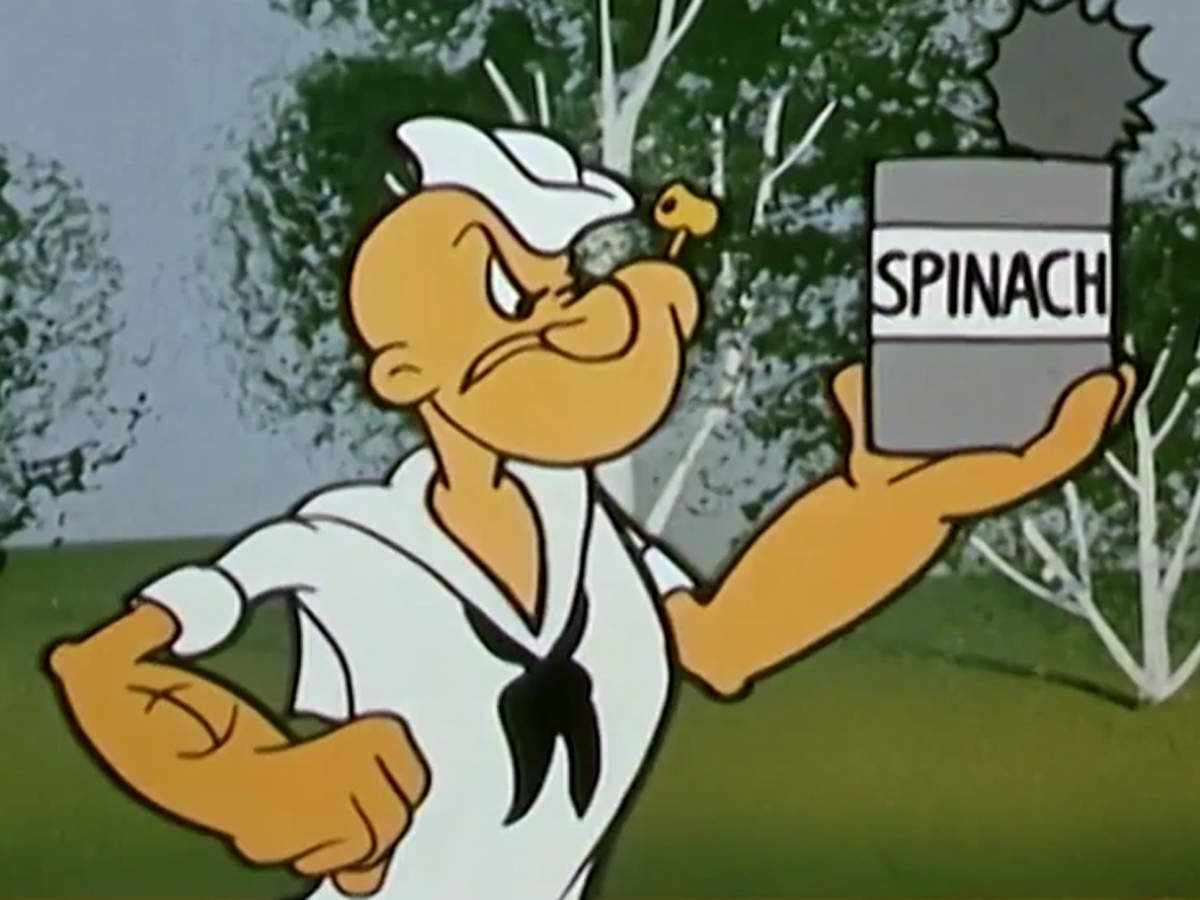
Popeye is a brash, grizzled cartoon sailor who gains superhuman power after eating a small can of spinach. He is a scruffy little sailor with muscular forearms, a tiny, squinty eye, as well as a screwed-up face, accented by a pipe in his lips. He has a gravelly voice and is constantly grumbling under his breath, but he’s always ready for a brawl rather than a logical dialogue. “I yam what I yam, and that’s all I yam,” he says. Popeye’s sweetheart is the spindly, clumsy Olive Oyl, for whom he continuously competes with Bluto, his shaggy, towering adversary. Popeye and all the other characters from the comic strip were widely sold on toys, apparel, and other items.
Popeye made his debut as a gruff sailor for hire in the Thimble Theater comic “Dice Island” on January 17, 1929. Despite being introduced as just a minor figure he turned out to be a major hit. Popeye was originally presented as an extremely powerful and somewhat illiterate but very wise sailor who would receive exceptional luck and tenacity by rubbing the mystical Whiffle Hen Bernice, however by 1932, he came to embrace spinach, citing it as a healthy way to acquire strength.
As the strips became increasingly focused on Popeye, he began to date Castor’s sister Olive Oyl when she left her former partner Ham Gravy, and the pair would go on to be one of the most renowned couples in cartoon history. Popeye would return as the primary character in the 1948 graphic novel by E. C. Segar’s apprentice Bud Sagendorf, which blended aspects both from classic Thimble Theatre as well as the Fleischer Studios cartoons, after his run in the initial Thimble Theatre. Because of Popeye’s enormous success, he was turned into an animation that was only based loosely on Thimble Theatre, resulting in episodic cartoons.
The original Popeye the Sailor cartoon’s enormous popularity ensured a long-running succession of standalone theatrical cartoons for the now-famous sailor. In Fleischer Studios’ different cartoons, he would generally have to save his lover Olive Oyl from the villainous Bluto, his opponent and occasionally his buddy, or embark on a daring journey with Olive and his best friend, Wellington Wimpy.
A few of the cartoons have a unique recurrent approach, such as him fighting a minor adversary he can’t defeat or keeping an eye on his adoptive son Swee’Pea. Because these theatrical pieces diverged significantly from Segar’s comics, several characters from the cartoon never appeared or appeared only once. Most of these cartoons centered on Popeye’s exploits and shenanigans, as well as Olive and, sometimes, Wimpy, as they battled the villainous Bluto.
While Popeye was generally presented in a variety of odd professions, the tales in the animations would contain his brawling exploits or his journeys in other parts of the globe while doing remarkable feats and ensuring Olive’s security and their romance. Popeye was shown to be a member of the United States Navy during World War II, and his clothing was modified to a Navy suite in white, which he would wear from the 1940s through the 1960s.
During the latter years of Fleischer Studios’ existence, the cartoons they created were WWII stories about Popeye’s valiant endeavors to assist America in battling the enemy, particularly the Japanese as well as the Germans. Cartoons depicting these fight sequences have frequently been pulled from broadcasts because they are deemed too “politically incorrect.” Additionally, in the 1940s cartoons, Popeye received four nephews who were named Popeye, Poopeye, Peepeye and Pupeye, who first appeared as his kids in an early short inside a dream sequence.
Following Paramount Studios’ takeover of the Popeye cartoon franchise in 1942, the Popeye animations were now managed by Famous Studios, that made drastic changes that abandoned almost every trace of Thimble Theater but instead largely focused on plots that included Popeye, Olive, and Bluto in something matching a love triangle, with few shorts straying from that layout, which concerned Olive falling in love with Bluto while Popeye beat him up.
Famous Studios’ revivals of Fleischer cartoons were significantly altered to erase all signs of Segar creations other than Popeye, Bluto, and Olive, such as Popeye’s Pappy substituting Goonland’s Goons with what may be considered racial stereotypes of Africans headed by a Bluto-like cannibal. Supporting characters that were important, such as Popeye’s buddies even made several cameos in Fleischer animations, such as Wimpy, Pappy, as well as Swee’Pea, but were only featured a few times.
Popeye’s status as an adventuresome sailor was likewise diminished to the point that he was rarely shown at sea or even in the Navy, save for a few cartoons from wartime. Popeye’s depiction in the cartoon adaptation has been criticized for providing him a single solution to all of life’s troubles, as well as applauded for encouraging children to eat well. This dependency was most exemplified in the episode “How Green Is My Spinach,” which depicted Popeye as powerless without spinach, ridiculing the cartoons’ own formula while also parodying it and giving a rather dubious message.
The Paramount studio sold Popeye’s animation archive to Associated Artists Productions for television broadcasting in the 1950s. The very first Popeye the Sailor cartoon television series was developed in 1960 for first-run syndication, and it was a success. It would employ many aspects from the older theatrical animation series, notably the core premise of Popeye fighting to protect his sweetheart Olive from other male admirers while eating spinach to stay strong and healthy.
This Television show made a more visible attempt to reintroduce characters and aspects from Thimble Theater to Popeye’s side, and it even included characters that had never had the opportunity to appear in the animation. Interestingly, the only character who did not return was Bluto, who was substituted by his lookalike brother Brutus owing to King Features mistakenly believing that he was not actually a Thimble Theater hero.
While the program did feature Popeye’s romantic life, episodes centered more on his adventures across the world, similar to the Fleischer and other comic strip incarnations, and also featured other Thimble Theater adversaries. Popeye donned his Navy suit in the latter Fleischer animations and also his most Famous shorts, with the exception of the premiere episode “Barbecue for Two,” where he wore his original attire. In a surprising turn of events, other characters, such as Olive as well as Swee’Pea, would be transformed into true superheroes as a result of Popeye’s trademark spinach can.
“Popeye”, a theatrical live-action film directed by Robert Altman and based on Jules Pfeiffer’s original narrative, was produced in 1980 as a more accurate adaptation of Segar’s Thimble Theater. It brought practically each of Popeye’s companions to the big screen, albeit it presented the well-known sailor, played by Robin McLaurin Williams, as having an initial intolerance for spinach, and the location that it all took place in was Sweethaven, a port town constructed on Malta island by Altman’s set designers. Popeye was made into a musical, with fresh songs recorded and written by Harry Nilsson; nevertheless, Sammy Lerner’s iconic theme for the protagonist “I’m Popeye the Sailor Man,” was included in the final sequence.
Popeye and Son, the most recent animated series centered around Popeye, debuted in 1987. The program was distinctive in the Popeye series since it took place later during Popeye’s life after he had wedded Olive Oyl, settled down, and had his own son. The series was similar to its forerunner, The All-New Popeye Hour, in that it included several allusions to Thimble Theater as well as other media from Popeye’s past. The series, however, did not do as well as previous ones and was finally discontinued after 13 episodes. As the final animated Popeye series to air on television, it is fairly fitting that it finished at a calmer and happier stage in Popeye’s life.
Popeye earned a tribute show named The Popeye Show on Cartoon Network in 2001, which only played classic cartoons but also added trivia information and facts about Popeye and also occasionally presented unmodified original editions of the cartoons, with the program going on to have forty-five episodes. Mainframe Entertainment produced Popeye’s Voyage: The Quest for Pappy, a CGI-animated TV movie, with Lions Gate Entertainment and also King Features Entertainment in 2004.
In 2012, IDW Publishing launched a brand-new Popeye graphic novel that mostly keeps true to the character’s classic comic strip version and includes innumerable throwbacks as well as references to Popeye’s past adventures, as well as the return of several classic period characters.
The stories of each issue correspond more closely to the original structure of the earlier comics instead of the cartoons, since the series is more loyal to Segar as well as Sagendorf’s work, and the art even completely duplicates Segar’s style. Many of the locales in IDW’s comics were invaded by Martians from the 1962 playing card game as well as the 1996 film Mars Attacks in 2013, with Popeye facing off in battle against this rendition of the Martians inside the special Mars Attacks Popeye.
Main Characters of the cartoon
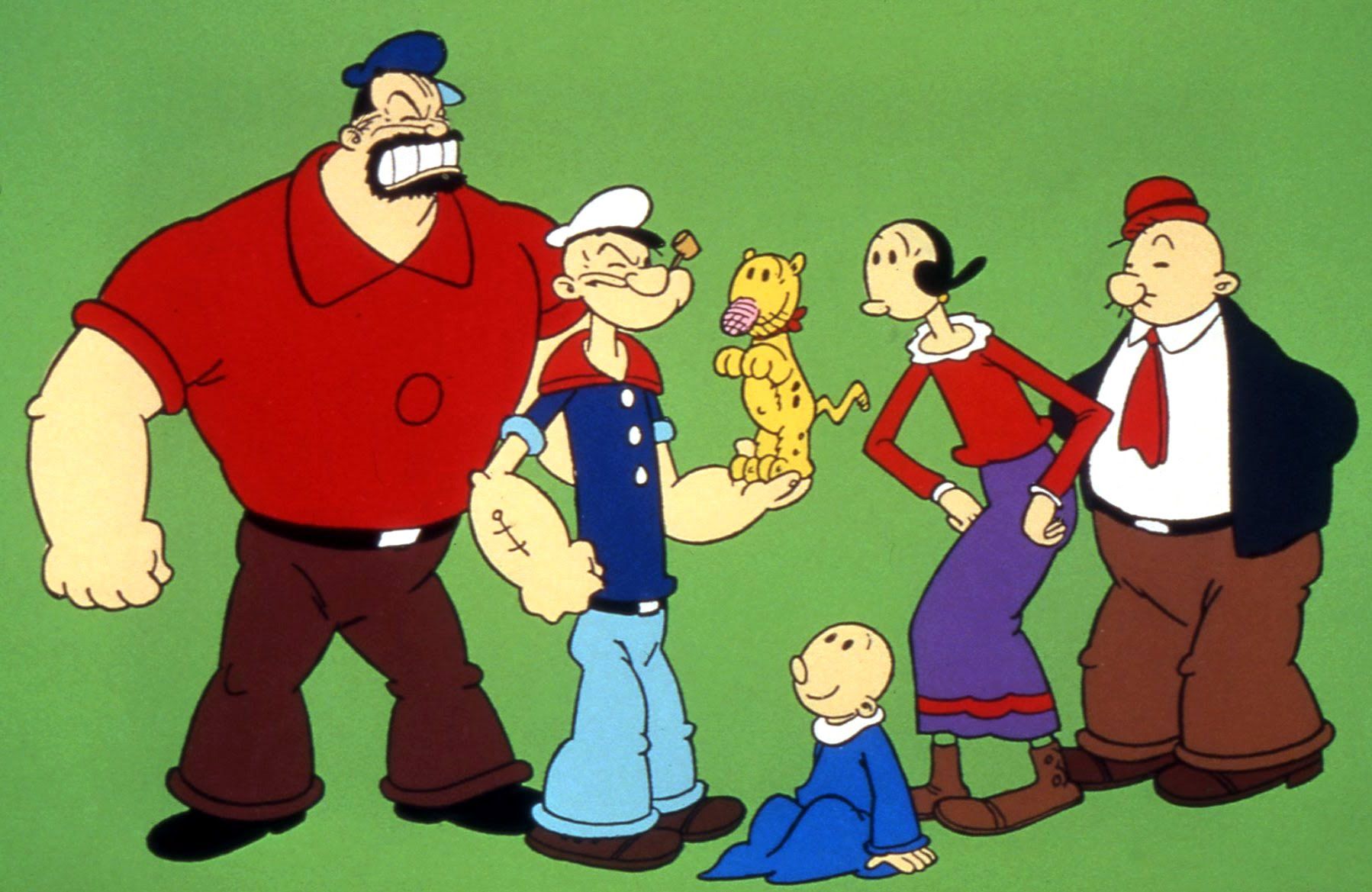
The Popeye cartoon features a host of interesting and highly amusing characters throughout its tumultuous lifetime, with some standing out more than the others.
Olive Oyl
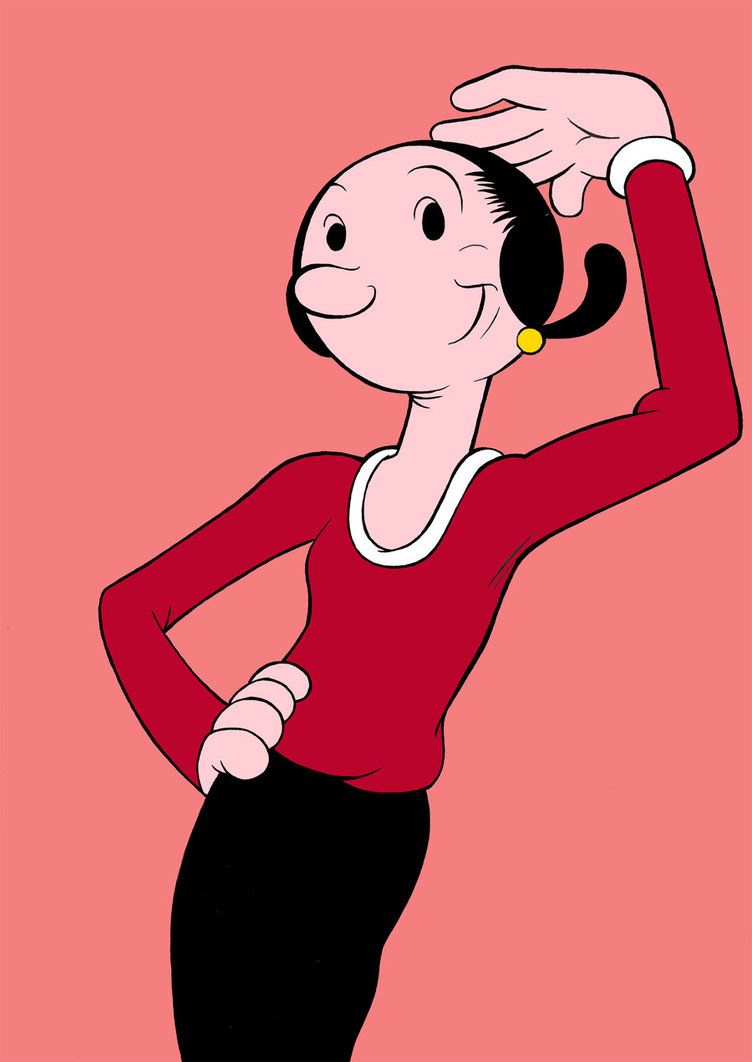
Elzie Crisler Segar developed the character Olive Oyl in 1919. Olive is Popeye’s lifelong girlfriend, and both of them have persevered in the face of many obstacles and experiences together. Olive has become one of the most known female animated characters in the world, serving as the signature character who popularized the “damsel-in-distress” concept since her introduction.
Dora Paskel, a real-life Chester, Illinois resident, was reported to have influenced the creation of the character. She was a major figure for the nine years preceding Popeye’s debut in January 1929. Olive was a flirtatious flapper in the comic strip, as described by Segar, whose exceptionally slim physique suited itself perfectly to the trends of the day; her long black locks were shown to be wrapped into a tidy bun, just like her mother.
Bluto
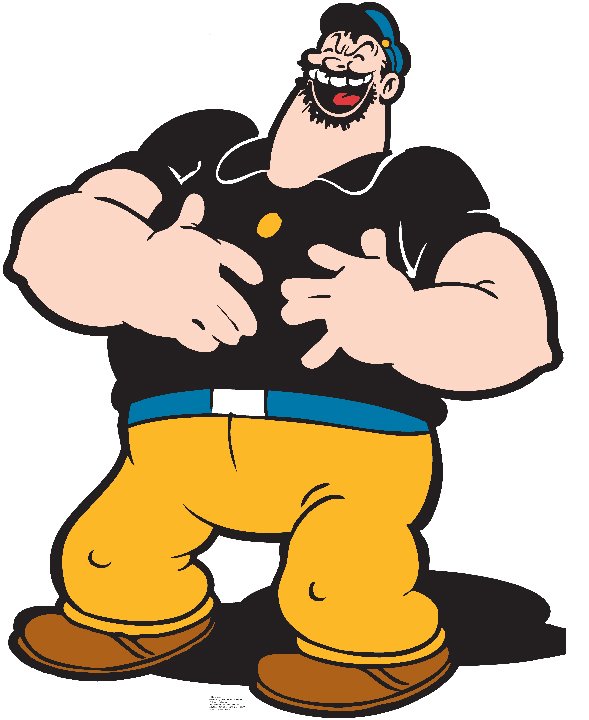
Regardless of the fact that Bluto was meant to be a one-time presence dubbed “Bluto the Terrible,” Bluto went on to become Popeye’s most-known foe after appearing in the Fleischer Studios animated adaptation, which further led to him becoming a recurring main villain in later comics; with the later incarnation being mostly known as Brutus. Bluto is now one of the most iconic villains in animation history, serving as a prototype representation of the hero’s adversary since his animated debut. Bluto was a terrifying and brutal thug of a seaman.
Bluto would reappear as one of the primary villains in E. C. Segar’s subordinate Bud Sagendorf’s 1948 comic book series, where he would again act as a counterpoint to Popeye or in aid to other villains such as The Sea Hag. His appearances in comic books would last for decades until the title was discontinued in 1984.
Wellington Wimpy
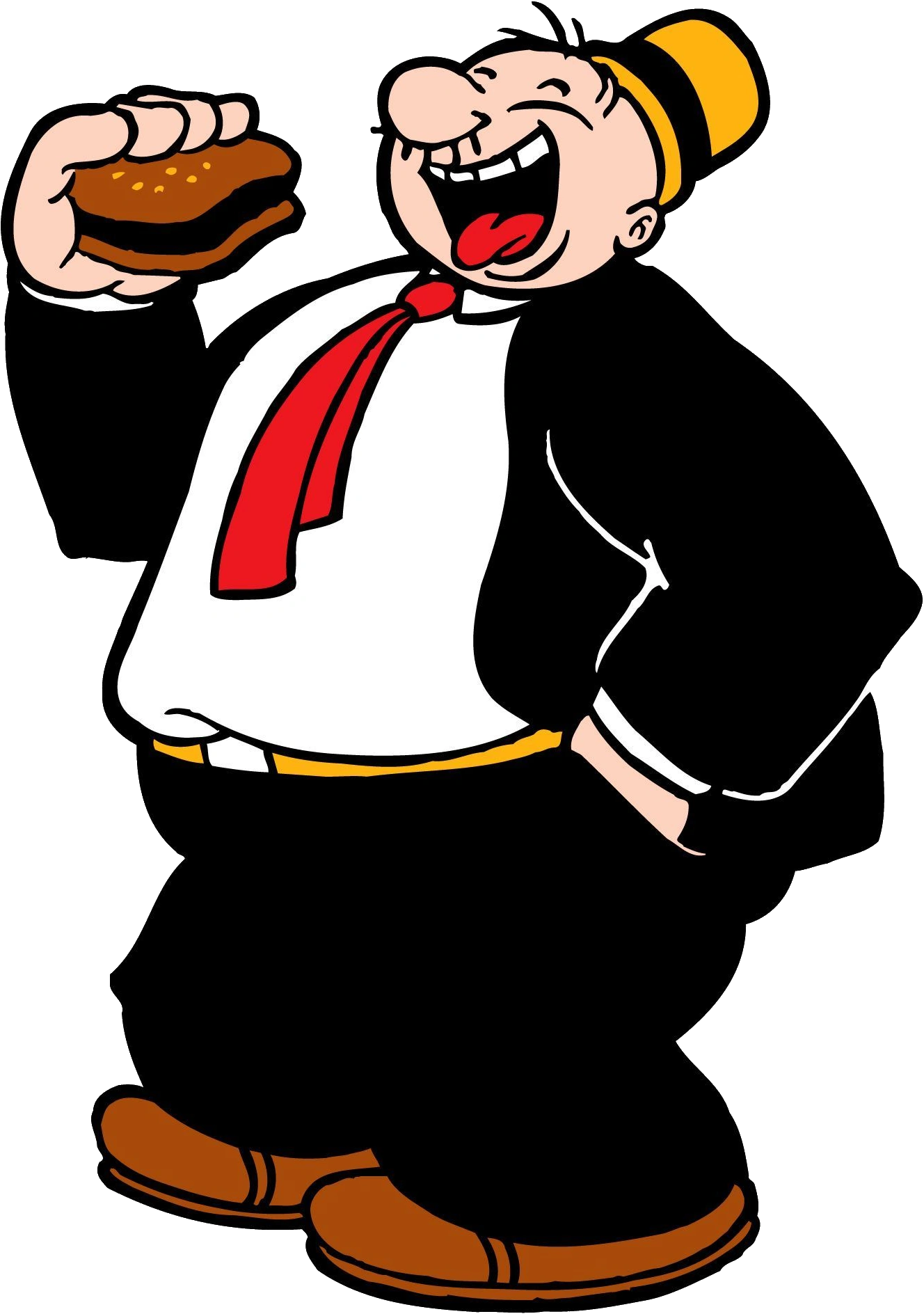
Wimpy is a big hamburger lover and Popeye’s close friend noted for his mooching tendencies and deceptively high intelligence. He is a soft-spoken, gentle, and frightened gentleman who will do anything for a free hamburger, typically with the vow to cheerfully repay the nice soul who provides him one on Tuesday, which he almost never does.
Wimpy has turned into a well-known and beloved figure in his own right, frequently considered one of the most famous fraidy sidekicks in cartoons, and his relationship with hamburgers has led to his appearing in several advertising campaigns relating to the meaty patty. Wimpy went on to reappear as a significant secondary figure in the 1948 graphic novel series by E. C. Segar’s associate Bud Sagendorf, mainly trying to leech off Popeye like always. His appearances in comic books would last for decades.
Alice the Goon
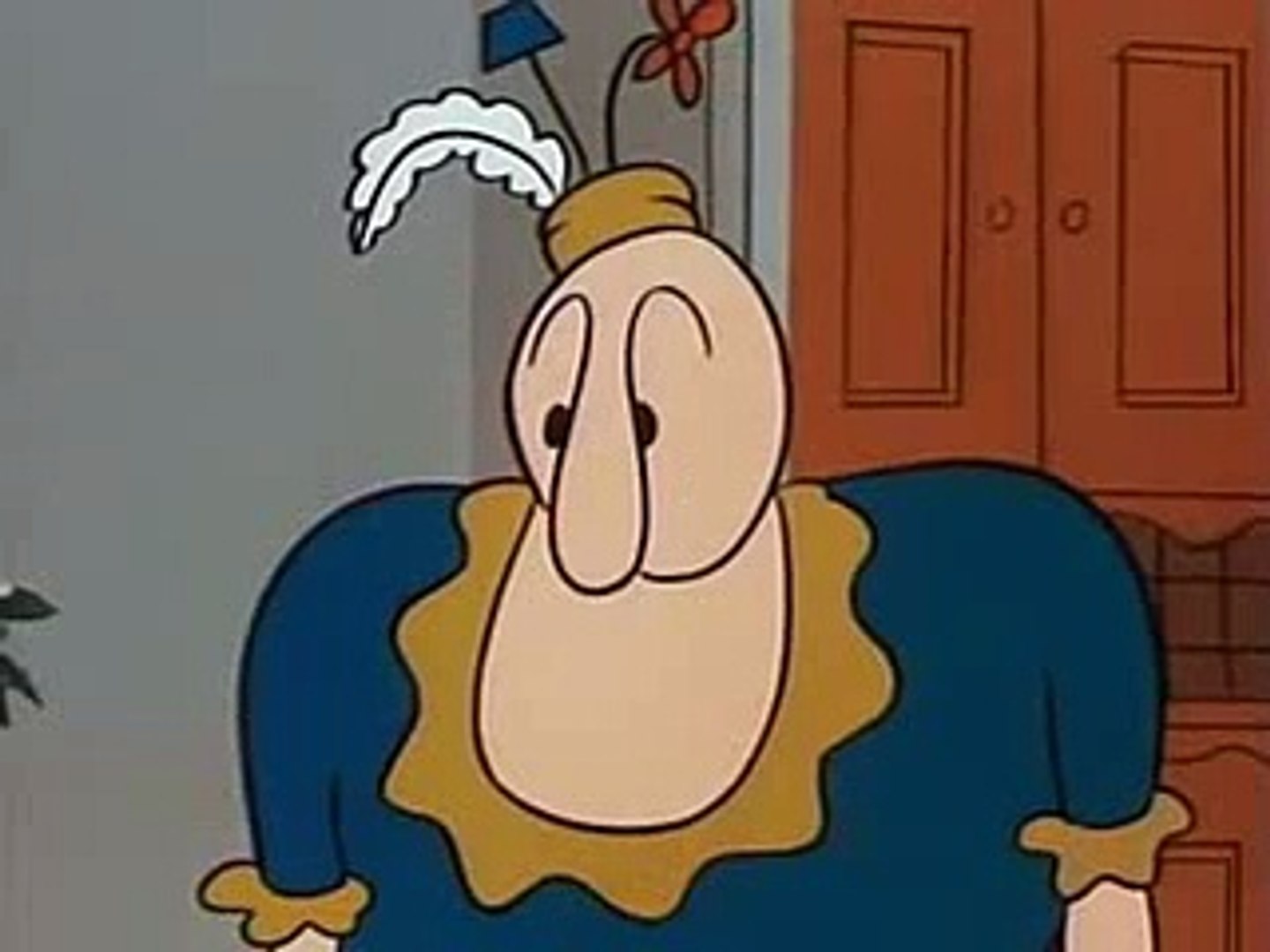
Alice the Goon is actually a Goon and a part of the tribe of weird humanoids who dwell on Goon Island. She is the clan’s leader. Because Goons are identical to one another, most people who encounter Alice for the very first time are often unable to determine that she is actually a female, which caused Popeye a great deal of trouble when he first saw her as an opponent.
Alice is now one of Popeye’s dearest friends and allies since their initial meeting. Alice makes her debut in the Thimble Theatre strip on Sunday, December 10th, 1933, as part of the “Plunder Island” narrative. She was a sorceress’s minion at the time, and her gender was unknown. After she had kidnapped Wimpy, her identity and gender were revealed in the 1934 January 14 strip. Popeye eventually learns that Alice was a nonconsenting slave to the Sea Hag when she kidnapped Alice’s baby, and Popeye assists Alice in regaining her freedom.
Brutus
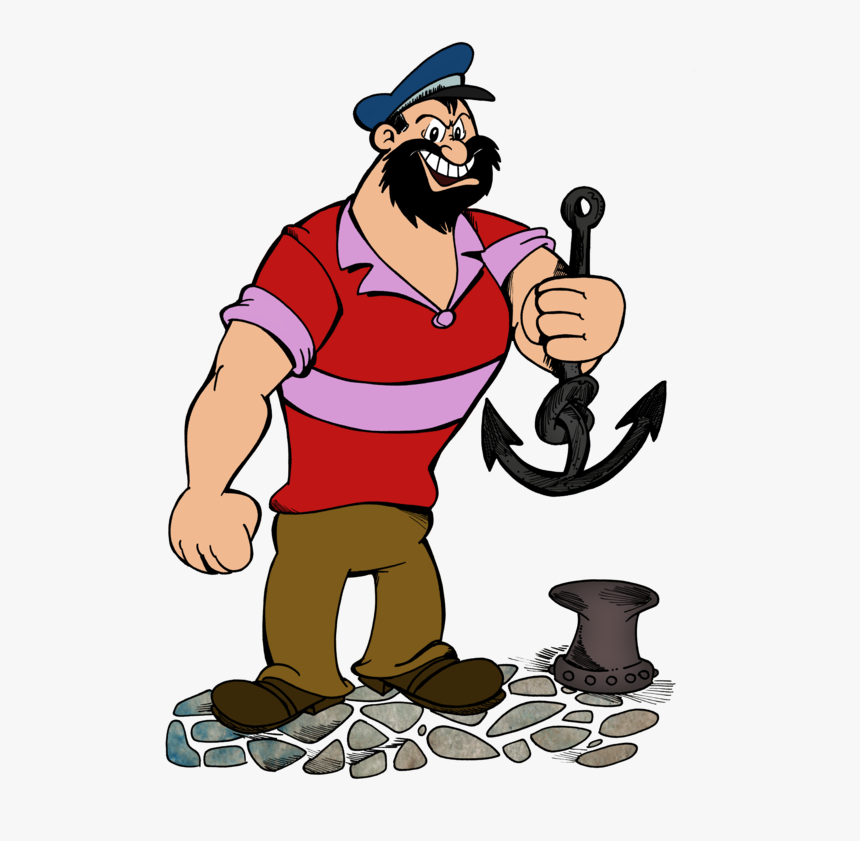
Popeye’s adversary is Brutus. Brutus is actually a new character made to imitate the older Bluto in both looks and behavior. He was created to fill Bluto’s position during a period when it was widely assumed that he was not presented first in the initial Thimble Theater. In order to avoid using characters from Paramount Pictures productions the animation company, King Features Syndicate’s TV established Brutus as one of the primary antagonists, along with the Sea Hag having her animated debut.
Jackson Beck, who voiced Bluto in numerous theatrical cartoons until their demise, played Brutus in the program. Brutus is the enemy in a variety of Popeye media, including video games and collectibles. The idea of Brutus becoming Bluto’s brother also is discussed in the second of Ocean Comics’ Popeye Special comic books, which depict Popeye’s early years; this was the very first time the twin boys were shown next to each other, with Brutus as the kinder, more cowardly one, and fearful of his more villainous brother.
The Sea Hag
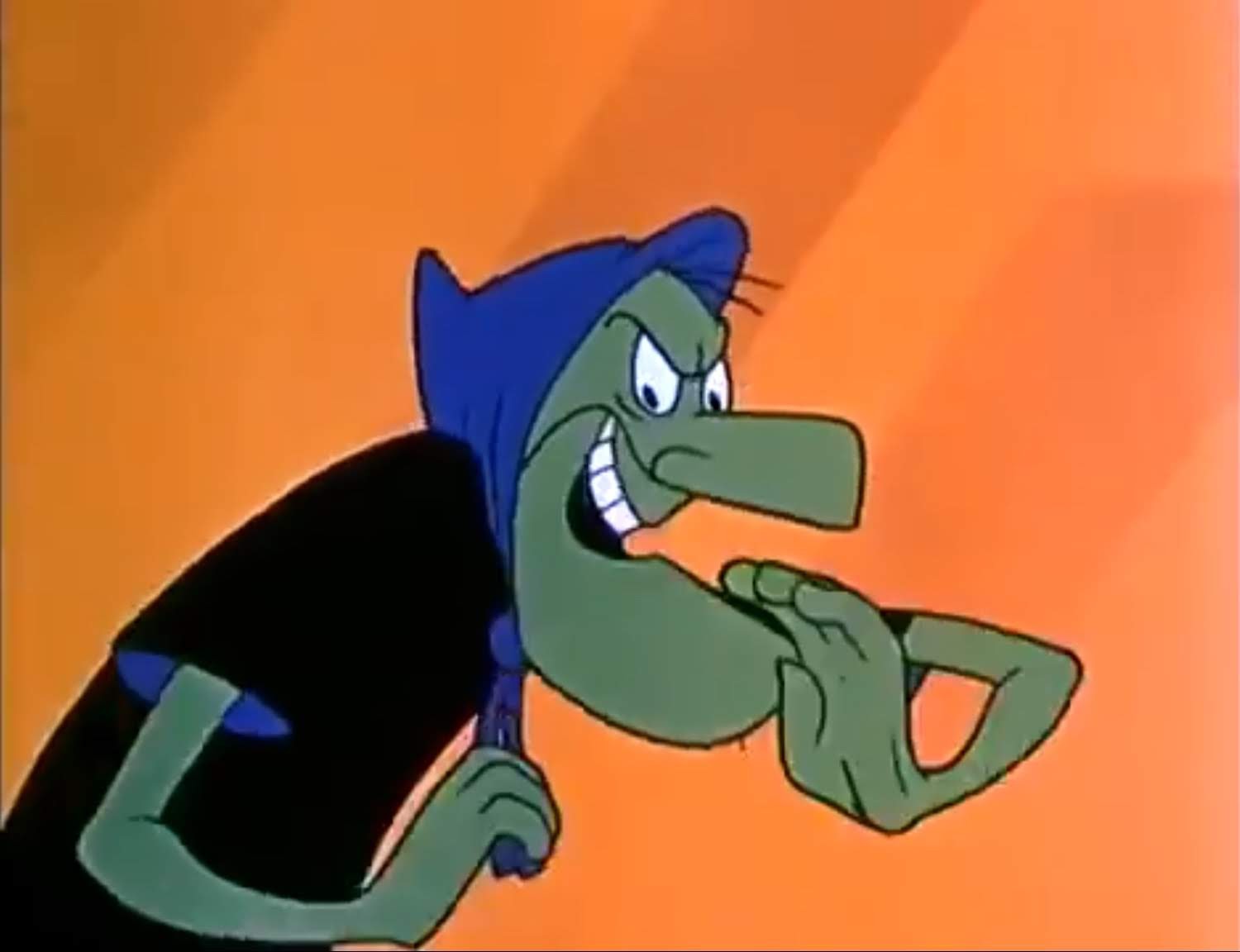
It might be claimed that perhaps the Sea Hag is Popeye’s first and actual major adversary, but due to her omission from the early animations, she is typically only regarded as the principal antagonist in comic books and certain animated productions.
She is a towering, unruly witch who appears as Popeye’s most dreadful foe in comics and animations. The Sea Hag made her animation debut as a recurrent character in the 1960 Popeye tv show, serving as one of the program’s two principal enemies with Brutus. Two of the segments she appeared in were loose interpretations of her Thimble Theater stories, with her even adopting her “The Rose of the Sea” disguise in one of them. Unlike in the comics, the Hag displayed none of the romantic feelings she is recognized to have for Popeye.
Unusual Facts about Popeye you should definitely know!
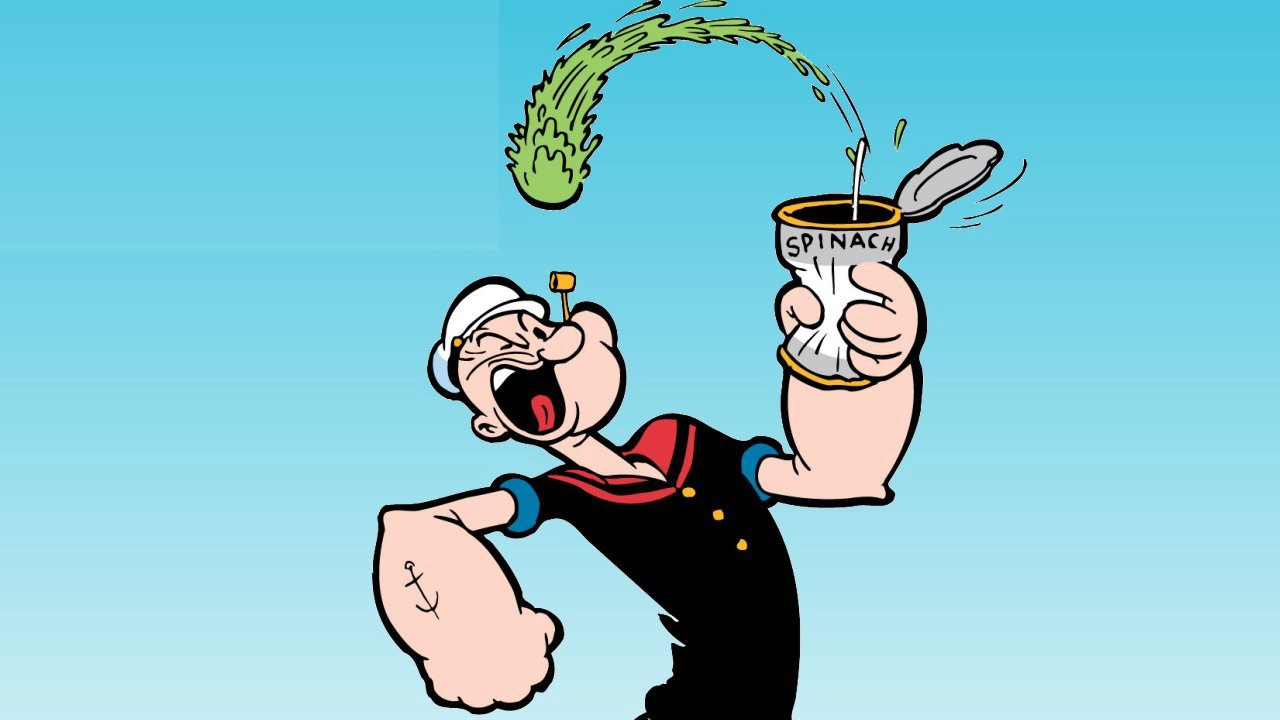
To commemorate the 75th birthday of Popeye the spinach-eating Sailor Man, the Empire State Building was illuminated in spinach green in 2004.
Popeye, starring Robin Williams, was filmed in Malta in 1980. Its set was later turned into a theme park named Popeye Village or Sweethaven Village. Picnics and boat trips are available to the general public here.
Popeye first obtained strength by scratching the head of a rare Whiffle Hen in 1929, before discovering the supernatural power of spinach in 1932.
William “Billy” Costello voiced Popeye in animations until he was fired for “poor conduct.”
In 1935, Jack Mercer was cast as Popeye’s voice in cartoons, a role he held for over 40 years. Jack Mercer as well as Margie Hynes, the real individuals behind the voices of Olive Oyl and Popeye, married each other.
Popeye, our beloved Sailor Man, was the first animated character to be honored with a monument when one was erected in Crystal City in Texas, in the year 1937 to commemorate his service to the spinach business.
Popeye’s love of spinach has been linked by US spinach producers with a 33% rise in spinach consumption. The character aided in driving sales of green vegetables in the United States and other areas of the world. It had a profound influence on children and inspired them to eat nutritious foods.
Castor Oyl is Olive Oyl’s lesser-known brother. Because the moniker Olive Oyl is considered an affront to the olive tree in Spain, she was renamed, Rosario.
According to Popeye, he is a descendant of Hercules, and his forefathers presumably gained their power from garlic.
Because of this popular program and comic strip, several new terms and slang have entered the English language, such as wimp, dufus, and jeep.
Conclusion
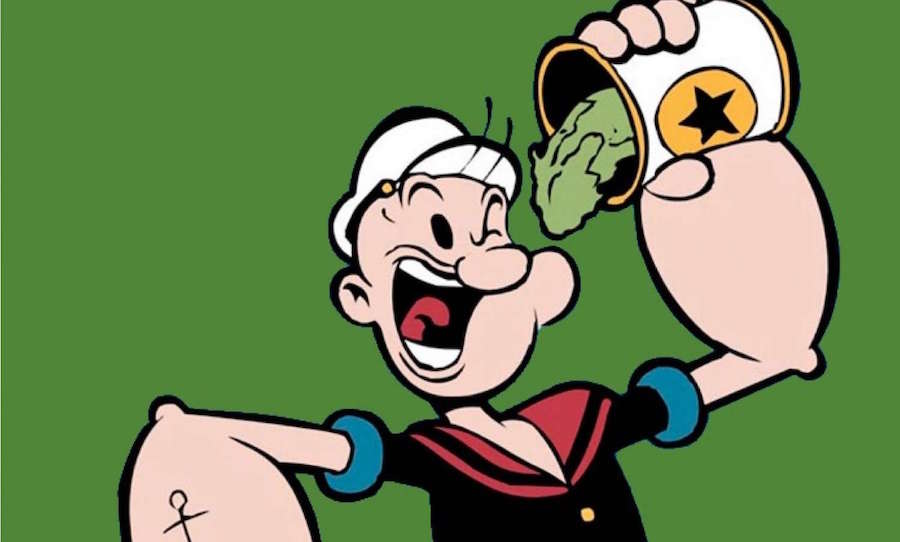
It was announced in March 2010 that Sony Pictures Animation is working on a 3D computer-animated Popeye feature, with Avi Arad producing. The script for the film is being written by Jay Scherick as well as David Ronn, who are the creators of The Smurfs, according to Sony Pictures Animation. Genndy Tartakovsky was supposed to direct the film, which he hoped to make “as artistic and fantastical as possible,” according to reports in June 2012.
Sony Pictures Animation planned the release date on September 26, 2014 in November 2012, which was moved back to 2015 in May 2013. On May 11, 2020, King Features Syndicate revealed that a Popeye film is in the works, with Genndy Tartakovsky returning to the project after claiming that he left the project before. According to Sony Pictures Animation, the project is still in the works. Here’s to hoping that one day, we get to see this amusing, quirky, and eternally loved sailor man and his entertaining girlfriend on the silver screen.
